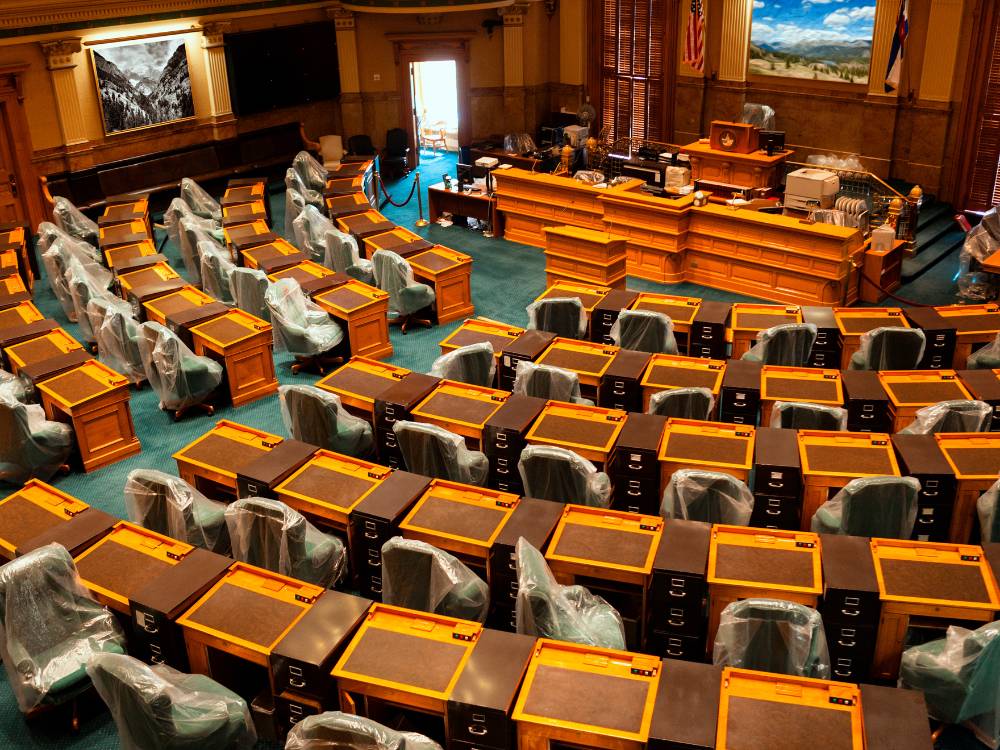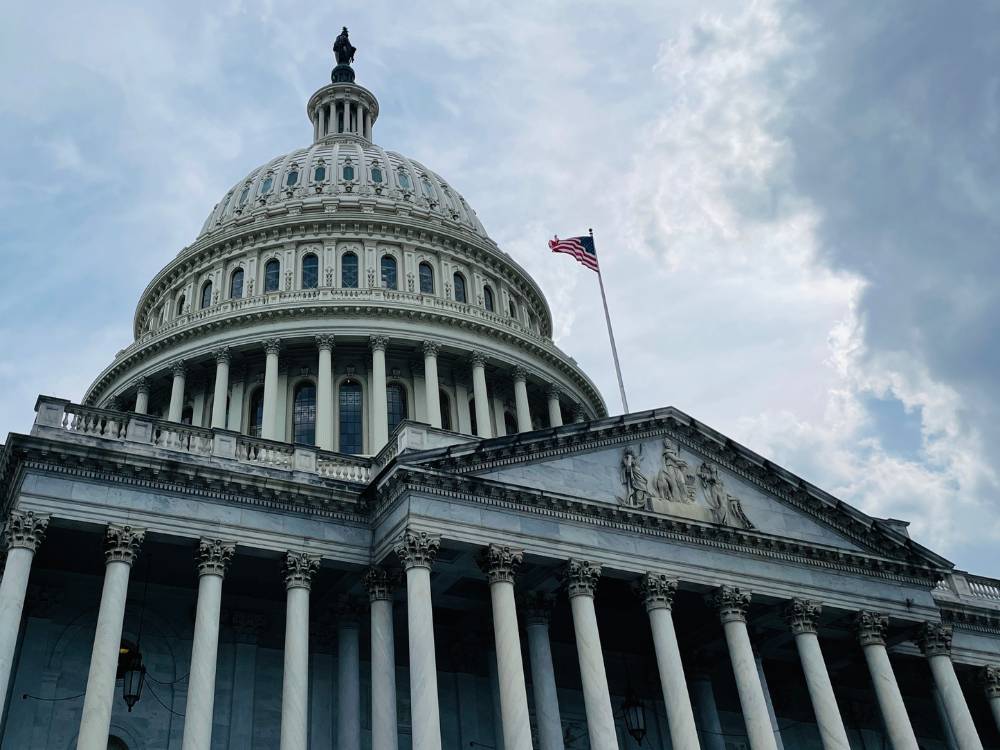As September comes to a close, the U.S. government seems headed for a shutdown, which would begin on October 1. Although it is possible that a last-minute agreement could keep the lights on, that becomes less likely with each passing day. Here’s a look at the federal funding process, the current situation in Congress, and the potential consequences of a failure to fund government operations.
Twelve Appropriations Bills
The federal fiscal year begins on October 1, and under normal procedures 12 appropriations bills for various government sectors should be passed by that date to fund activities ranging from defense and national park operations to food safety and salaries for federal employees.
These appropriations are considered discretionary spending, meaning that Congress has flexibility in setting the amounts. Although discretionary spending is an ongoing source of conflict, it accounted for only 27% of federal spending in FY 2023, and almost half of that was for defense, which is typically less of a point of conflict. Mandatory spending (including Social Security and Medicare), which is required by law, accounted for about 63%, and interest on the federal debt accounted for 10%.1
Obviously, it would be helpful for federal agencies to know their operating budgets in advance of the fiscal year, but all 12 appropriations bills have not been passed before October 1 since FY 1997. In 11 of the last 13 years, lawmakers have not passed a single spending bill in time.2 That is the situation as of September 27 this year. (One bill, to fund military construction and the Department of Veterans Affairs, has been passed by the House but not the Senate).3

Continuing Resolutions and Omnibus Spending Bills
To buy time for further budget negotiations, Congress typically passes a continuing resolution, which extends federal spending to a specific date, generally at or based on the same level as the previous year. These bills are essentially placeholders that keep the government open until full-year spending legislation is enacted. Since 1998, it has taken an average of almost four months after the beginning of the fiscal year for that year’s final spending bill to become law.4
Even with the extension provided by continuing resolutions, Congress seldom passes the 12 appropriations bills. Instead, they are often combined into massive omnibus spending bills that may include other provisions that do not affect funding. For example, the SECURE 2.0 Act, which fundamentally changed the retirement savings rules, was included in the omnibus spending bill for FY 2023, passed in late December 2023, almost three months into the fiscal year.
Current Congressional Situation
The U.S. Constitution gives the House of Representatives sole power to initiate revenue bills, so the House typically passes funding legislation and sends it to the Senate. There are often conflicts between the two bodies, especially when they are controlled by different parties, as they are now. These conflicts are typically settled through negotiations after a continuing resolution extends the budget process.
In a reversal of the typical process, the Senate acted first this year, releasing bipartisan legislation on September 26 that would maintain current funding through November 17 and provide additional funding for disaster relief and the war in Ukraine. Although this is likely to pass the Senate later in the week, it was unclear how the House would react to the legislation.5
Late on September 26, the House cleared four appropriation bills for debate (Agriculture, Defense, Homeland Security, and State Department). It is unknown whether these bills will pass the House, and if they do, it will be too late to negotiate the provisions with the Senate. A proposed continuing resolution that would extend government funding and include new provisions for border security had not been cleared for debate as of the afternoon of September 27.6

Effects of a Shutdown
The effects of a government shutdown depend on its length, and fortunately, most are short. There have been 20 shutdowns since the current budget process began in the mid-1970s, with an average length of eight days. The longest by far was the most recent shutdown, which lasted 35 days in December 2018 and January 2019, and demonstrates some potential consequences of an extended closure.7 However, in 2018-19, five of the 12 spending bills had already passed before the shutdown — including large agencies like Defense, Education, and Health & Human Services — which helped limit the damage. The current impasse, with no appropriations passed, could lead to an even more painful situation.8
First some things that will not be affected: The mail will be delivered. Social Security checks will be mailed. Interest on U.S. Treasury bonds will be paid.9 However, some programs will stop immediately, including the Supplemental Nutrition Program for Women, Infants, and Children, which helps to provide food for about 7 million low-income mothers and children.10
Federal workers will not be paid. Workers considered “essential” will be required to work without pay, while others will be furloughed. Lost wages will be reimbursed after funding is approved, but this does not help lower-paid employees who may be living paycheck to paycheck.11 In an extended shutdown, the greatest hardship would fall on lower-paid essential workers, which would include many military families. Furloughed workers would struggle as well, but they might look for other jobs, and in many states would be able to apply for unemployment benefits.12 (Members of Congress, who are paid out of a permanent appropriation that does need renewal, would continue to be paid.)13
Air travel could be affected. In 2019, absenteeism more than tripled among Transportation Security Administration (TSA) workers, resulting in long lines, delays, and gate closures at some airports. According to the TSA, many workers took time off for financial reasons.14 Air traffic controllers, who are better paid, remained on the job without pay and without normal support staff. However, on January 25, 2019, an increase in absences by controllers temporarily shut down New York’s La Guardia airport and led to substantial delays at airports in Newark, Philadelphia, and Atlanta. This may have been an impetus to reopen the government later that day.15

Unlike federal employees, workers for government contractors are not guaranteed to be paid, and contractors often work side-by-side with federal employees in government agencies. In 2019, it was estimated that 1.2 million contract employees faced lost or delayed revenue of more than $200 million per day.16 A more widespread shutdown would put even more workers at risk.
While essential workers will maintain some federal services, furloughed workers would leave significant gaps. At this time, it’s unknown exactly how each agency will respond to a shutdown. In 2019, some national parks used alternate funding to maintain limited access, which caused problems with trash and vandalism and was deemed illegal by the Government Accounting Office. This year, all parks might be closed during an extended shutdown.17 Many other federal services may be delayed or suspended, ranging from food inspections to small business loans and economic reports.18 Delays in economic statistics could make it more difficult for the Federal Reserve to judge appropriate policy.19
Although a shutdown would cause temporary hardship for workers and the citizens they serve, the long-term effect on the economy would be relatively benign, because lost payments are generally made up after spending is authorized. A shutdown might decrease gross domestic product (GDP) for the fourth quarter of 2023, but if the shutdown ends by the end of the year, GDP for the first quarter of 2024 would theoretically be increased. Even if delayed spending is recovered, however, lost productivity by furloughed workers will not be regained. And an extended shutdown could harm consumer and investor sentiment.20
Surprisingly, previous shutdowns generally have not hurt the broad stock market, other than short-term reactions. But the current market situation is delicate to begin with, and it is impossible to predict future market direction.21
For now, it’s wise to maintain a steady course in your own finances. In the event of a shutdown, be sure to check the status of federal agencies and services that may affect you directly.
All investments are subject to market fluctuation, risk, and loss of principal. When sold, investments may be worth more or less than their original cost. U.S. Treasury securities are guaranteed by the federal government as to the timely payment of principal and interest. The principal value of Treasury securities fluctuates with market conditions. If not held to maturity, they could be worth more or less than the original amount paid. Projections are based on current conditions, subject to change, and may not come to pass.
1) Congressional Budget Office, May 2023
2, 4, 8) Pew Research Center, September 13, 2023
3) Committee for a Responsible Federal Budget, September 27, 2023
5, 6, 9, 18, 19) The Wall Street Journal, September 26, 2023
7, 11) CNN, September 21, 2023
10) MarketWatch, September 26, 2023
12) afge.org, September 25, 2023 (American Federation of Government Employees)
13) CBS News, September 25, 2023
14) Associated Press, January 21, 2019
15) The Washington Post, January 25, 2019
16) Bloomberg, January 17, 2019
17) Bloomberg Government, September 12, 2023
20) Congressional Research Service, September 22, 2023
21) USA Today, September 26, 2023
JS Morlu LLC is a top-tier accounting firm based in Woodbridge, Virginia, with a team of highly experienced and qualified CPAs and business advisors. We are dedicated to providing comprehensive accounting, tax, and business advisory services to clients throughout the Washington, D.C. Metro Area and the surrounding regions. With over a decade of experience, we have cultivated a deep understanding of our clients’ needs and aspirations. We recognize that our clients seek more than just value-added accounting services; they seek a trusted partner who can guide them towards achieving their business goals and personal financial well-being.
Talk to us || What our clients says about us


